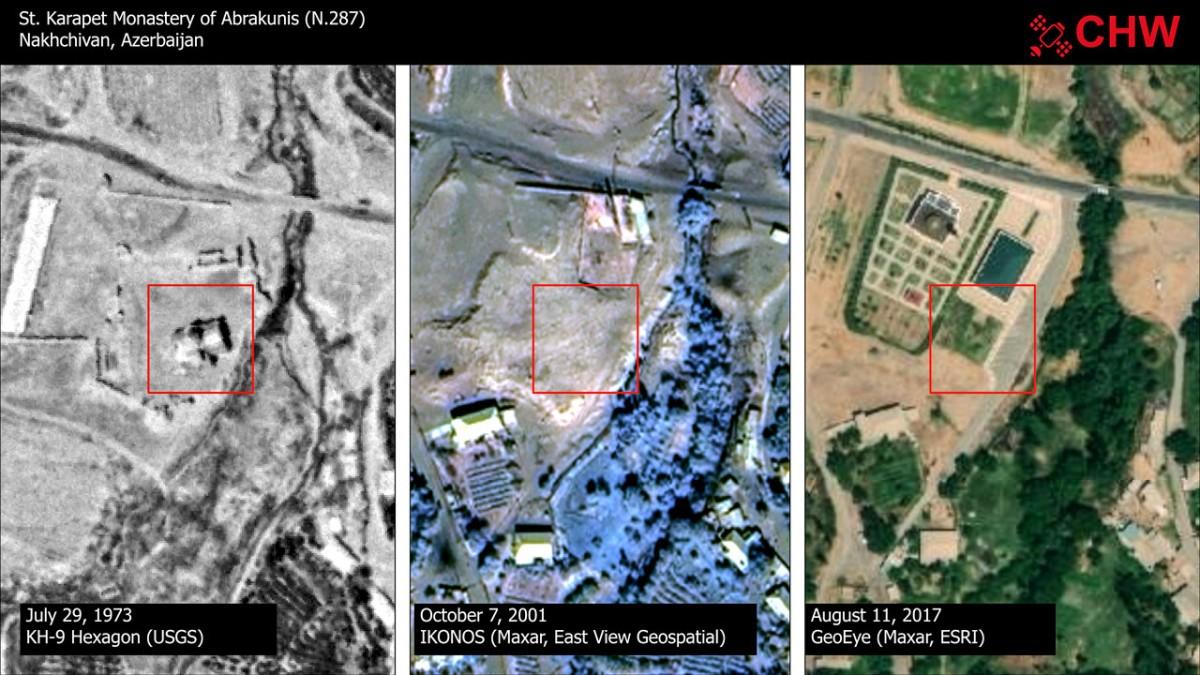2025
2025
2024-05-25

Using high-quality satellite images, Caucasian Heritage Watch documented the Armenian cultural heritage sites of the Nakhijevan Autonomous Republic. Declassified American satellite images from the 1970s and 1980s were compared to maps created by Soviet topographers from the 1930s to 1990s, as well as modern satellite images.
Evaluating the current state of historical, architectural, spiritual, and other monuments (including cemeteries) in Nakhijevan, researchers documented that during the years 1997-2011, 108 medieval and early Armenian monasteries, churches, cemeteries, and other historical and cultural monuments were destroyed in Nakhijevan. These make up 98 percent of the identified places of Armenian cultural heritage.
The systematic and secret destruction of Armenian cultural monuments is a policy adopted by Azerbaijan. In 2005, when the Scottish traveler Stephen Sim arrived in Nakhijevan to investigate the state of Armenian monuments, he was arrested by the authorities and subsequently expelled from the country. A year later, in August 2006, Azerbaijan banned the entry of the European Parliament delegation to Jugha, who were supposed to assess the state of the Armenian cemetery there. In 2011, Azerbaijan also denied the US Ambassador to Azerbaijan, Matthew Bryza, access to the same territory.
According to the authors of the report published in 2021, the destruction of Nakhijevan's Armenian heritage is now documented. They call for international institutions authorized to preserve world cultural heritage (such as UNESCO, ICOMOS, etc.) to make judicial decisions in this regard. "There are reasons to fear that the policy of cultural destruction in Nakhijevan will be implemented in the Nagorno-Karabakh region as well," states the report.
For years, the Azerbaijani authorities tried to hide the vandalism in Nakhijevan and spread the false thesis that no Armenians ever lived in Nakhijevan, and that there were no Armenian historical and cultural monuments.
However, thanks to the use of modern technologies, it has been proven that a cultural genocide took place in Nakhijevan. Armenian cultural monuments in Artsakh will also suffer the same fate if punitive measures are not taken by relevant institutions. This is also a global threat because it can set a precedent for other genocidal regimes.